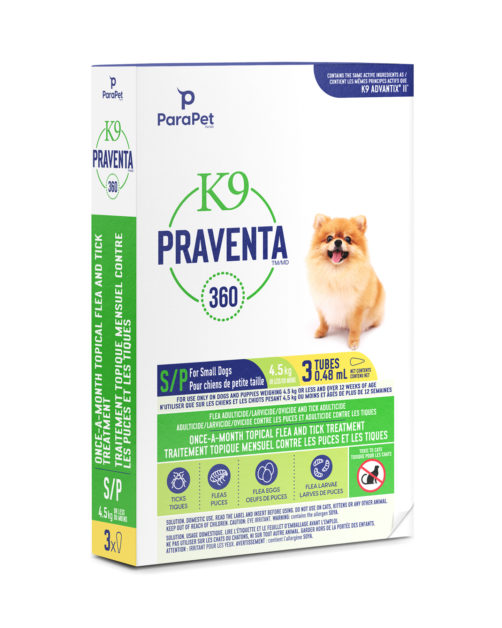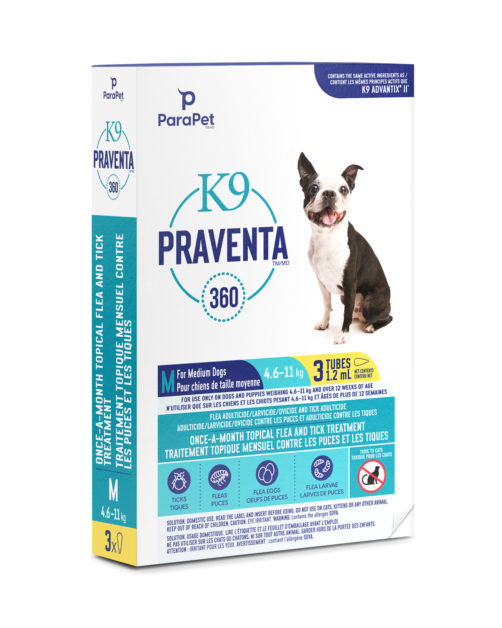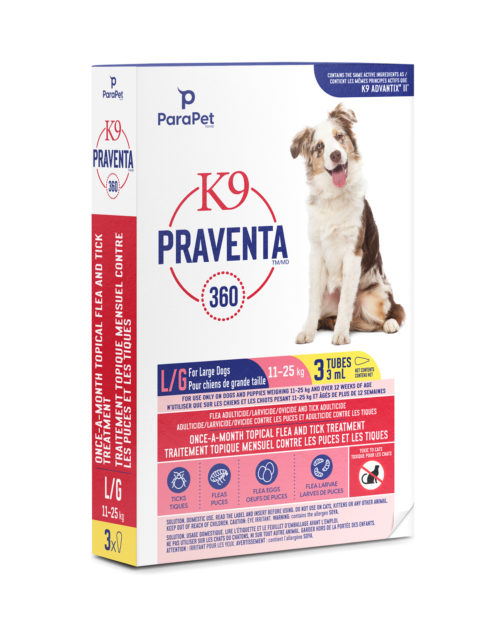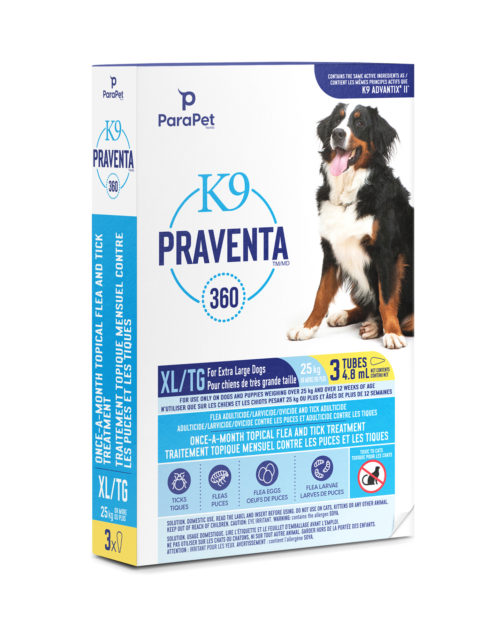The weather is beautiful, and you’ve just spent a great day outdoors with your best friend – hiking in the woods, strolling through the park or just hanging around in your yard. However, once you’re back inside, a tick-check for both you and your dog should be one of the first things you do.
Don’t be fooled, while ticks prefer to live in shady, wooded areas, dense vegetation, tall grass, weeds, or leaves, they can also be found in urban parks and even your own backyard.
There are over 40 recognized species of ticks in Canada but only a few carry Lyme Disease. While Lyme Disease is by far the most common tick-borne illness in Canada, ticks can also spread other diseases, such as Anaplasmosis and Rocky Mountain Spotted Fever, just to name a couple.
Once a tick attaches, it feeds on the blood of its host. In most cases, an infected tick must feed for at least 24 hours before the bacteria is transmitted – so early removal is crucial to reduce the risk of your dog getting Lyme Disease.
So, how do you check for ticks and what do you do if you find one?
CHECKING FOR TICKS
After spending any time outdoors, the first thing to do is to check your dog for ticks. Run your fingers through your pet’s fur with gentle pressure to feel for any small bumps that were not there before. Focus on the following areas:
- Head and ears (inside and out)
- Under the collar
- Between the toes
- Around the tail
- Under the front legs
- Between the back legs
- Eyelids
If you do find a tick, careful removal is the next step.

REMOVING A TICK
Using fine-tipped tweezers, grasp the tick as close to the dog’s skin as possible. Fine-tipped tweezers are the key to ensuring that the tick does not tear, leaving part of it embedded in your pet and possibly leading to infection.
Once you’ve grasped the tick correctly, without squeezing its body or twisting or jerking it, gently pull it upward with steady, even pressure until the tick lets go of the skin. Carefully place the tick in a sealable plastic bag or closed container. Whatever you do, do not crush the tick with your fingers. This increases the risk of coming into contact with its toxic stomach contents and spreading infection through breaks in your skin.
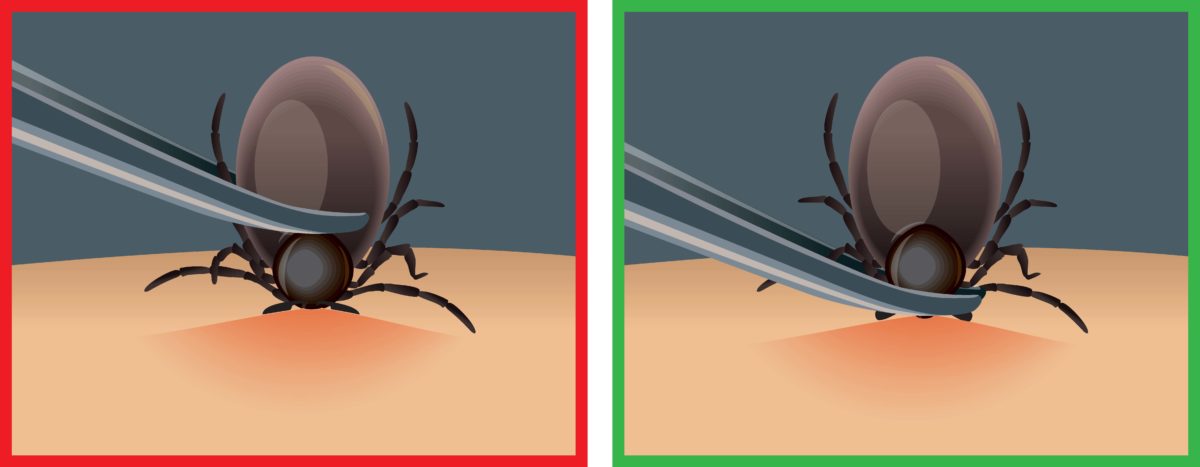
Alternatively, you can use a specially designed tick remover, following the manufacturer’s instructions for use.
After removing the tick, clean the site of the tick bite AND wash your hands thoroughly with soap and water or rubbing alcohol. Don’t forget to clean and disinfect the tweezers too.
Monitor your pet and call your veterinarian if you notice symptoms of Lyme Disease, such as fever, joint pain, lack of appetite, low energy, generalized stiffness or sensitivity to touch. Be sure to bring the tick with you on your visit, as your vet may want to test it to determine if it carried Lyme Disease or any other tick-borne diseases.
TICK PREVENTION
Using a quality monthly topical flea and tick preventative is the best way to avoid tick bites. Unlike oral preventatives, the topical repels and kills ticks on contact, meaning the tick doesn’t have to bite your pet in order for the topical preventative to work.
It’s a common misconception that ticks are only active in the spring and summer. In fact, as long as the temperature is 4⁰C or above, ticks can be a problem. So, it’s strongly recommended to use a preventative year-round for continued protection.


